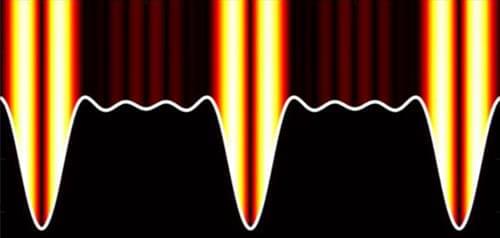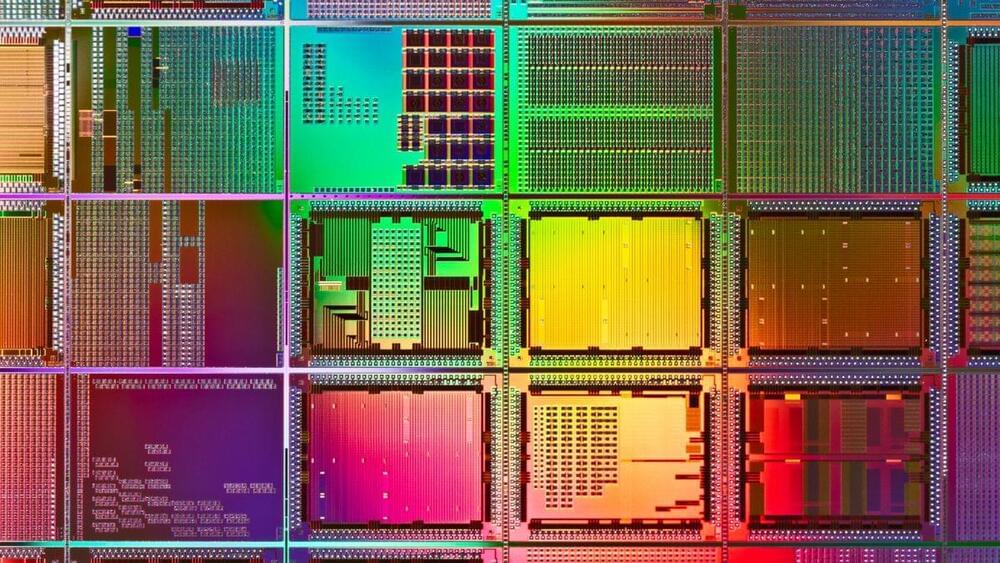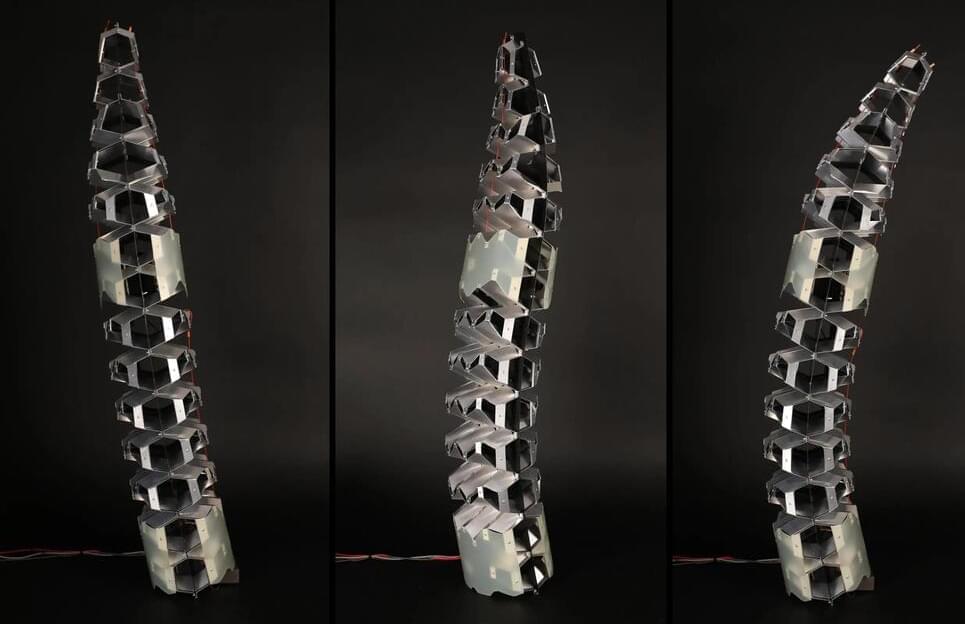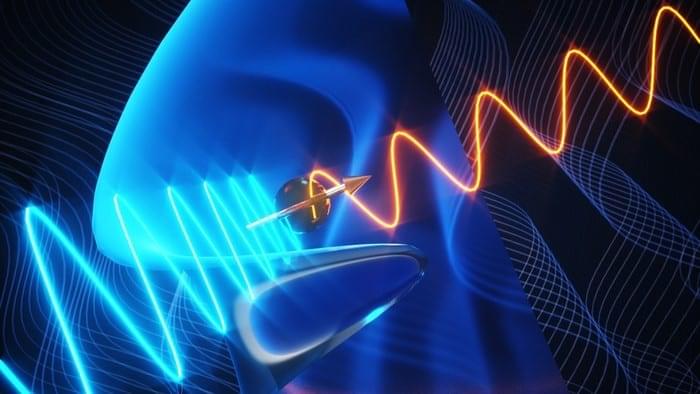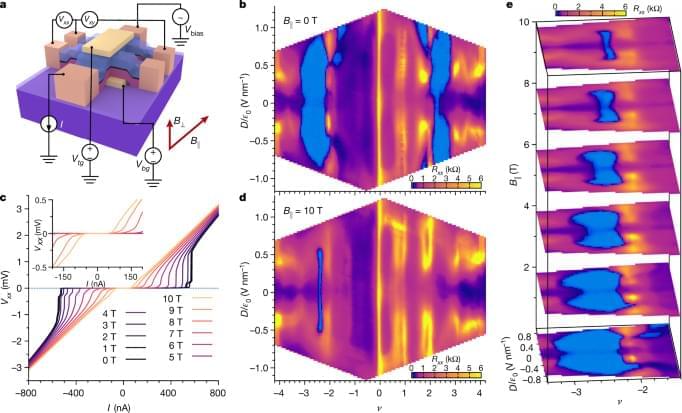Using a metallic grating and infrared light, researchers have uncovered a light–matter coupling regime where the local coupling strength can be 3.5 times higher than the global average for the material.
Category: materials – Page 110
Two or more linear defects can twist around one another to form an entity that may affect the properties of a material.
Systems made from ordered components, such as crystals, are often laced with defects, such as dislocations, where the ordering is disrupted. Researchers have now identified a new class of such flaws where two or more dislocations come together and become locked into complex geometrical arrangements, such as coils or knots, that can’t be smoothed away [1]. Using microscopy experiments backed up by theoretical arguments, they have identified such coiled “metadefects” in thin films of liquid crystals. The researchers believe that in crystalline materials, metadefects might influence mechanical properties such as plasticity. And since defects may feature in systems ranging from the structure of spacetime to magnets and bacterial colonies, the research team suspects that this new class may show up in other places.
Many liquid crystals are composed of rod-shaped molecules that can become oriented relative to one another while remaining free to move around. One of the phases that some of these materials can adopt is called cholesteric, a periodic pattern in which the orientation of the molecules twists like the steps in a spiral staircase. At each “step” of the staircase, all of the molecules are aligned. Defects in this organized structure typically show up as dark lines when thin films of cholesteric liquid crystals are examined under a microscope.
Year 2022 😗😁
During the IEEE International Electron Devices Meeting (or IEDM), Intel claimed that by 2030, there would be circuits with transistor counts of a trillion, roughly ten times the number of transistors currently available on modern CPUs.
At the meeting, Intel’s Components Research Group laid down its prediction for the future of circuits manufacturing (via sweclockers) and how new packaging technologies and materials will allow chipmakers to build chips with 10x the transistor density, keeping in Moore’s Law.
Professor Geoff Duller from Aberystwyth University explained that, given the considerable age of these artifacts, assigning precise dates to them presented a significant challenge. To address this issue, luminescence dating techniques were employed. These innovative dating methods have broad-ranging implications, enabling the dating of much older materials and facilitating the reconstruction of sites that offer insights into human evolution—in the case of Kalambo Falls, an excavation conducted in the 1960s yielded comparable wooden fragments. Still, their dating had remained elusive, leaving the true importance of the site uncertain until now.
Kalambo Falls is located on the Kalambo River above a 772-foot (235-meter) waterfall on the border of Zambia and Tanzania near Lake Tanganyika. The area is on a ‘tentative ‘list from UNESCO for becoming a World Heritage site because of its archaeological significance.
Produced with techniques borrowed from Japanese paper-cutting, the strong metal lattices are lighter than cork and have customizable mechanical properties.
Cellular solids are materials composed of many cells that have been packed together, such as a honeycomb. The shape of those cells largely determines the material’s mechanical properties, including its stiffness or strength. Bones, for instance, are filled with a natural material that enables them to be lightweight, but stiff and strong.
Inspired by bones and other cellular solids found in nature, humans have used the same concept to develop architected materials. By changing the geometry of the unit cells that make up these materials, researchers can customize the material’s mechanical, thermal, or acoustic properties. Architected materials are used in many applications, from shock-absorbing packing foam to heat-regulating radiators.
Year 2022 This could be a good room temperature superconductor 😗😁.
New quasiparticle could be used in quantum sensors.
Intel is trying to keep up with the exploding demand for new computing horsepower.
In what is being seen as a shift from silicon, Intel announced Monday their progress in commercializing glass substrates toward the end of the decade. The company said that glass substrates are an improvement in design, allowing more transistors to be connected in a package and will help overcome the limitations of organic materials.
As the world advances to incorporate developments in data-intensive workloads in artificial intelligence, glass substrates, in comparison to organic substrates,… More.
Intel.
Intel says its new glass substrate will help the company create more powerful processors with better production yields.
This is a room temperature superconductor it is called graphene 😗.
A large violation of the Pauli limit and re-entrant superconductivity in a magnetic field is reported for magic-angle twisted trilayer graphene, suggesting that the spin configuration of the superconducting state of this material is unlikely to consist of spin singlets.
Antimatter Rifles
Posted in materials, military | 1 Comment on Antimatter Rifles
Antimatter is vastly more dangerous than even nuclear weapons, but warm temperature superconductors may allow it to be weaponized into man-portable machinegu…
A new technique allows for much better control of twist angle and strain in layered two-dimensional materials.
